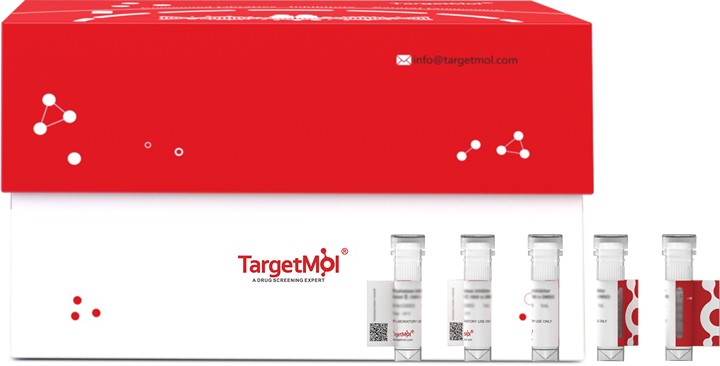- Remove All
 Your shopping cart is currently empty
Your shopping cart is currently empty
DEFB1 Protein, Human, Recombinant (hFc)
The DEFB1 gene, encoding for the constitutively expressed human beta-defensin 1 (hBD1) antimicrobial peptide is a potential candidate when studying genetic susceptibility to caries. DEFB1 genetic variations have been reported as contributing to hBD1 production impairment, leading to a greater susceptibility to be infected by oral pathogens, also leading to periodontitis. To counteract host immunity, Cryptosporidium parvum has evolved multiple strategies to suppress host antimicrobial defense. One such strategy is to reduce the production of the antimicrobial peptide beta-defensin 1 (DEFB1) by host epithelial cells. Beta-Defensin-1, an antimicrobial peptide encoded by the DEFB1 gene, is known to play an important role in lung mucosal immunity.

DEFB1 Protein, Human, Recombinant (hFc)
| Pack Size | Price | Availability | Quantity |
|---|---|---|---|
| 50 μg | $357 | 7-10 days | |
| 1 mg | $3,520 | 7-10 days |
Product Information
| Biological Activity | Activity testing is in progress. It is theoretically active, but we cannot guarantee it. If you require protein activity, we recommend choosing the eukaryotic expression version first. |
| Description | The DEFB1 gene, encoding for the constitutively expressed human beta-defensin 1 (hBD1) antimicrobial peptide is a potential candidate when studying genetic susceptibility to caries. DEFB1 genetic variations have been reported as contributing to hBD1 production impairment, leading to a greater susceptibility to be infected by oral pathogens, also leading to periodontitis. To counteract host immunity, Cryptosporidium parvum has evolved multiple strategies to suppress host antimicrobial defense. One such strategy is to reduce the production of the antimicrobial peptide beta-defensin 1 (DEFB1) by host epithelial cells. Beta-Defensin-1, an antimicrobial peptide encoded by the DEFB1 gene, is known to play an important role in lung mucosal immunity. |
| Species | Human |
| Expression System | HEK293 Cells |
| Tag | C-hFc |
| Accession Number | P60022 |
| Synonyms | β Defensin 1/DEFB1,HBD1,defensin, β1,defensin, beta 1,DEFB101,DEFB-1,BD1 |
| Construction | A DNA sequence encoding the human DEFB1 (NP_005209.1) (Met1-Lys68) was expressed with the Fc region of human IgG1 at the C-terminus. Predicted N terminal: Gly 22 |
| Protein Purity | > 95 % as determined by SDS-PAGE. |
| Molecular Weight | 31.8 kDa (predicted) |
| Endotoxin | < 1.0 EU/μg of the protein as determined by the LAL method. |
| Formulation | Lyophilized from a solution filtered through a 0.22 μm filter, containing PBS, pH 7.4. Typically, a mixture containing 5% to 8% trehalose, mannitol, and 0.01% Tween 80 is incorporated as a protective agent before lyophilization. |
| Reconstitution | A Certificate of Analysis (CoA) containing reconstitution instructions is included with the products. Please refer to the CoA for detailed information. |
| Stability & Storage | It is recommended to store recombinant proteins at -20°C to -80°C for future use. Lyophilized powders can be stably stored for over 12 months, while liquid products can be stored for 6-12 months at -80°C. For reconstituted protein solutions, the solution can be stored at -20°C to -80°C for at least 3 months. Please avoid multiple freeze-thaw cycles and store products in aliquots. |
| Shipping | In general, Lyophilized powders are shipping with blue ice. |
| Research Background | The DEFB1 gene, encoding for the constitutively expressed human beta-defensin 1 (hBD1) antimicrobial peptide is a potential candidate when studying genetic susceptibility to caries. DEFB1 genetic variations have been reported as contributing to hBD1 production impairment, leading to a greater susceptibility to be infected by oral pathogens, also leading to periodontitis. To counteract host immunity, Cryptosporidium parvum has evolved multiple strategies to suppress host antimicrobial defense. One such strategy is to reduce the production of the antimicrobial peptide beta-defensin 1 (DEFB1) by host epithelial cells. Beta-Defensin-1, an antimicrobial peptide encoded by the DEFB1 gene, is known to play an important role in lung mucosal immunity. |
Dose Conversion
Sci Citations
Calculator
Tech Support

Copyright © 2015-2025 TargetMol Chemicals Inc. All Rights Reserved.


